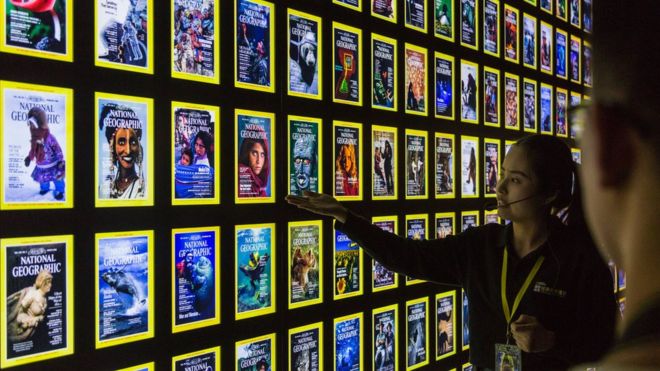
US magazine National Geographic says its past coverage of people around the world was racist, BBC News reported.
"It ignored non-white Americans and showed different groups as exotic or savage, propagating 'every type of cliché'," editor Susan Goldberg said.
The magazine's April edition is dedicated to race and it has asked a historian to look at past issues.
Our April issue is devoted to exploring race—how it defines, separates and unites us. Read the story behind the cover: https://t.co/PPTVg3UpM8 pic.twitter.com/5kunxfDrHt
— National Geographic (@NatGeo) March 12, 2018
It decided to re-examine its coverage to mark 50 years since civil rights leader Martin Luther King was murdered.
Nepal's marathon monks trade robes for running shoes
"Let's confront today's shameful use of racism as a political strategy and prove we are better than this," Goldberg wrote in an editorial entitled 'For decades, our coverage was racist'.
Goldberg said some of the magazine's archive material left her "speechless", including a 1,916 photo of Australian Aborigines with the caption "South Australian Blackfellows: These savages rank lowest in intelligence of all human beings".
Asked to examine its coverage, University of Virginia associate professor John Edwin Mason said National Geographic had served only to reinforce racist attitudes in a magazine with "tremendous authority".
Farhan Akhtar on 'Don 3' and collaboration with the National Geographic
He showed that until the 1970s the magazine ignored non-white Americans, only showing them as labourers or domestic staff.
Mason also pointed to photos of natives encountering Western technology - creating an "us-and-them" split between "civilized and uncivilized" - and the excessive numbers of photos of Pacific-island women.
He compared a piece covering apartheid-era South Africa in 1962 - which barely mentions any problems - and a second piece from 1977, which shows opposition to the regime by black leaders.
"It's not a perfect article, but it acknowledges the oppression," Mason wrote.
But the historian also acknowledged the good work the magazine did even during this period in showing its readers the wider world.
"It's possible to say that a magazine can open people's eyes at the same time it closes them," he said.
This article originally appeared on BBC News








1736939933-0/sidra--(8)1736939933-0-270x192.webp)

1736930217-0/sidra--(6)1736930217-0-270x192.webp)
1732012115-0/Untitled-design-(14)1732012115-0-270x192.webp)
1736844405-0/Express-Tribune-(2)1736844405-0-270x192.webp)










COMMENTS
Comments are moderated and generally will be posted if they are on-topic and not abusive.
For more information, please see our Comments FAQ